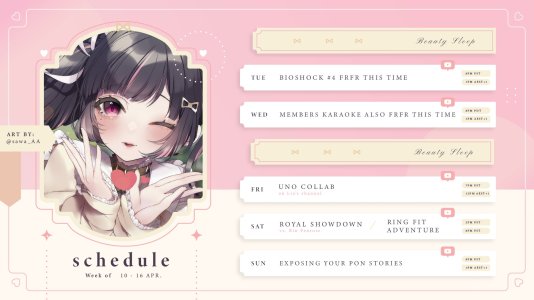Man... I wonder if the shotgun approach of Niji is still a viable strategy since they are having graduations left and right.
In regards to the shotgun approach of Niji, I wonder if they care more about total ccv than ccv per liver. For example, as they add more members to NijiEN, the average ccv of each liver will decrease, but if you combine all the little ccv of each liver, the sum will still be more than before.
It must be an attempt at casting a wide net by sending out as many streamers as possible and letting them all generate whatever income they can on their own to sustain the overall business, as opposed to other corpos who specifically curate a smaller group of streamers and promote them to be higher earners individually.
This isn't a new strategy; time for a history lesson. Nowadays, a YouTuber looking to become a YouTube Partner (having monetisation enabled on their channel), whether they are working independently or joining a Multi-Channel Network (think what Machinima used to be, the Curse Network, Screenwave etc.), has to meet two requirements before being considered: 1000 subscribers, and either 4000 hours of watch time in the last year or 10,000,000 Shorts views in the last 90 days.
This hasn't always been the case; for a period of several years it was entirely possible for anyone with a freshly-made channel to apply for partnership, and nine out of ten times they'd be accepted automatically and able to run ads on their videos right away. The catch is that for a tiny channel this would hardly be lucrative - AdSense doesn't pay out the revenue to a bank account until $100 of earnings have been accrued, so if they're only earning a few dollars a month it would take forever until they saw that money, if at all.
That is, until certain individuals and companies saw an opportunity to use these channels to their advantage. If a YouTuber is partnered via an MCN it is the MCN who handles payments rather than AdSense meaning they can set much lower payout thresholds, and so new MCNs started appearing, operating with a strategy of signing on literally any small channels they could bait onboard with a not-great revenue share (usually around 60:40 in the YouTuber's favour, when the industry standard at the time was about 80:20), on the agreement that they could withdraw their earnings every month without a threshold.
This strategy worked for those businesses right up until YouTube introduced the new partnership requirements, likely by design to shut down these particular MCNs. For them, it didn't matter if most of their channels were run by literal children with no business sense barely breaking a dollar a month in earnings; if they've signed on tens of thousands of channels like that and are taking 40% of each of their revenue it still adds up as decent passive income for the network - and if some of those channels left for better deals elsewhere or got banned for uploading pirated Naruto episodes, it didn't matter, because there were plenty more where they came from.
I don't think Nijisanji is shady in this sense (from my understanding they at least exclusively hire adults who can read a contract for themselves, rather than 13-year-olds who have their parents who think it's some video game thing sign it for them), but I think there are similarities in the business models. There are some perks to joining the company like easy access to collaborations with the more successful Niji streamers, and if you're smart you can work that to your advantage, but it is not in the company's interest to nurture your streaming career in the same way it is for Hololive, or even most small corpos. Your numbers make up a much smaller percentage of their overall revenue, and if you leave, then oh well, there's another six people debuting next month to replace you.








